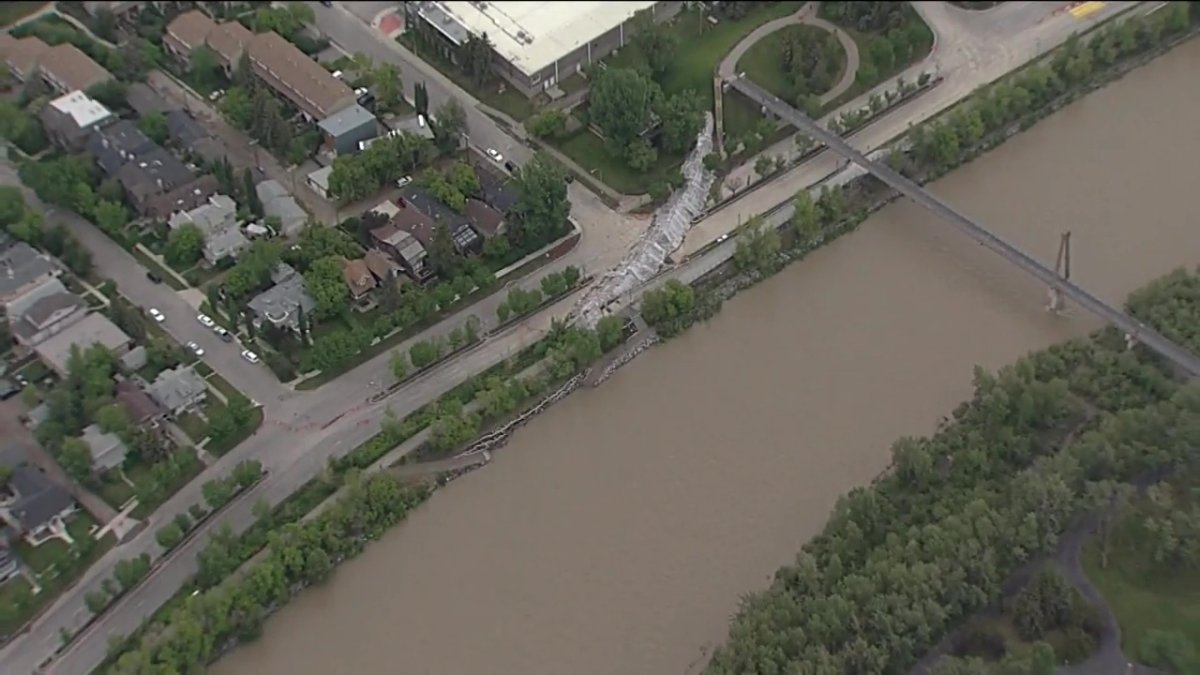Calgary emergency management officials have highlighted three higher possible disaster risks for the city that will get more attention in emergency preparedness efforts.

Those risks were part of the Calgary Emergency Management Agency’s (CEMA) yearly emergency preparedness status update presented to the city’s emergency management committee on Wednesday.
According to the 2022 Status of Emergency Preparedness in Calgary report, the three new high-risk factors include: civil disobedience, a pandemic and a dam break on the Elbow River.
CEMA chief Sue Henry said the three risk factors are not new to Calgary, but were recently re-assessed as high-risk after being formerly categorized as low-risk.
“Because of what we’re seeing in the environment nationally and internationally, we’re seeing more impacts and we’re seeing more frequency of civil disobedience type of events,” Henry told committee. “It’s also important that civil disobedience and protesting are not the same thing, they’re not interchangeable.”
Henry said CEMA defines civil disobedience as a form of non-violent protest that involves “intentional violation of law and refusal to obey the demands, orders and commands of a government authority.”
She added the Calgary Police Service is the lead agency on matters regarding civil disobedience.
Kelly Sundberg, a criminologist at Mount Royal University, said the reassessment of civil disobedience was “prudent” by local emergency officials.
“Now that we’ve seen our national capital occupied for weeks on end, along with other city halls and legislatures with significant and prolonged protest and occupation, I do think that it shown to be an effective means of getting a platform and attention,” Sunberg told Global News. “I think will see more of it, so cities like Calgary do have to consider how to deal with this.”

The reassessment of the risk of a dam break on the Elbow River was due to the economic impact of a worst-case scenario, Henry said.
Overall there are 65 individual risks, hazards and threats included in CEMA’s emergency preparedness report; 49 of those have been assessed at a medium-, low- or very-low risk.
The other 16 have a high-risk assessment and get more attention from emergency officials.
“Instead of focusing on 65 different risks, we can focus in on those 16 and really make sure that we’re super ready,” Henry said.
The assessments are based on industry standards and best practices, with compounding factors including frequency, severity, number of people impacted, things exposed to the hazard, and economic impact.
Henry told committee that CEMA is working to be better prepared for extreme weather events like heavy rainfall, and extreme cold and heat.

Eight of the top 16 priority high risk disasters in CEMA’s report are environmental and climate change related.
According to the report, there were 32 days with extreme heat warnings and 12 days with extreme cold warnings in Calgary in 2022.
“It would be easy to look at some of these potential risks and just move straight towards adapting to them like flood protection, more heating and cooling centers,” Calgary Climate Hub co-chair Robert Tremblay said.
“Those things are definitely important, but I think we need to not lose focus on the underlying cause of these is climate change, and we need to make sure we are getting our emissions down to address the root cause as well.”
The report said experts predict the risk of river flooding will increase with climate change, with flooding and heavy rainfall categorized as trigger events for other risks like critical infrastructure failure, dam breaches and rail incidents.
According to Henry, another CEMA report is expected in May that will focus on climate change.
The report noted that mitigation efforts during last June’s heavy rainfall helped to protect “tens of millions of dollars” of property and critical infrastructure.
A state of local emergency was declared after up to 150 mm of rain was forecasted to fall in the city; the city also constructed a berm across Memorial Drive to further protect property.
“Really it was about protecting Calgarians and their assets,” Emergency Management Committee chair Coun. Kourtney Penner told reporters. “We thankfully got less rainfall than we expected last year.”
According to CEMA, flood mitigation has resulted in a 55 per cent reduction in the city’s flood risk, and the city will be protected to a 1-in-200 year flood similar to the 2013 flooding event.




Comments